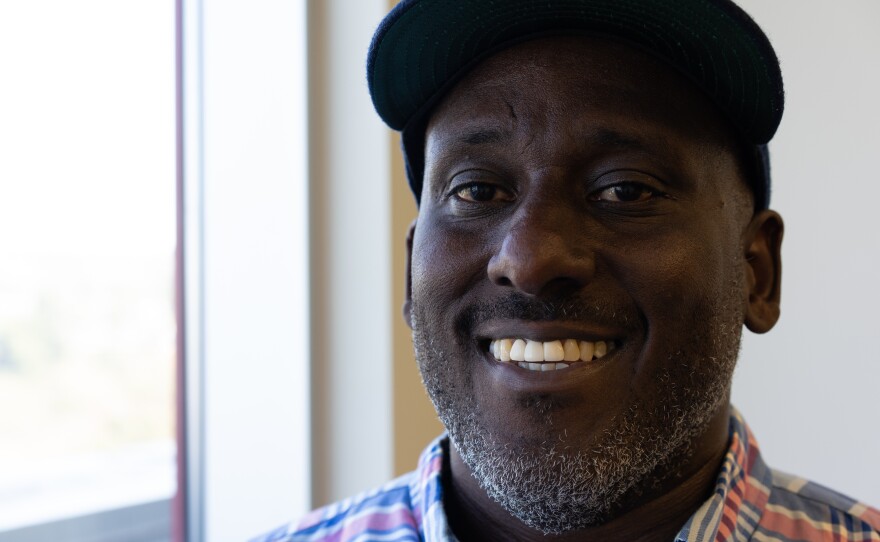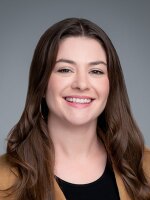A room of the Malcolm X Library in Valencia Park fills with chatter as more than a dozen people file in for a meet and greet with The Black Panthers of San Diego.
Half a century later, their 10-point platform remains the same. But now, copies are being passed into younger hands.
“We want freedom,” chief of staff Koran Fields reads aloud to the room. “We want the power to determine the destiny of our Black community.”
Their goal is to return “all power to all people.”
“We still suffer from the same conditions in the community,” San Diego Black Panther Chairman Robert “War” Williams said. “We still find ourselves disenfranchised.”
The incarcerated population in the United States is more than five times what it was in 1960. The unhoused population is rising. The Hunger Coalition estimates that 37% of Black people in San Diego County are nutrition insecure. All these issues impact Black Americans at a disproportionate rate.
Around the library table sit people of different skin colors and cultural backgrounds. The chapter now has a multicultural branch called “The Panther Party,” who sit in red berets alongside the Black Panthers. Attendees range from early 20s to gray-haired.

The original members revived the organization in 2016, and they are now recruiting the next generation.
At one end of the tables sits their minister of information, a 24-year-old dressed in all black, with curly hair spilling out of a beret.
“I like my speech and my action to align. So if I’m saying I’m a Panther, then you’re going to see a Panther,” she said.
She goes by Fiel. Many of the Panthers prefer to use pseudonyms for identity protection, saying the government still operates against radical Black organizations.
Fiel had been hunting for an outlet for what she calls revolutionary change. She said she “wasn’t really vibing with” the movements she saw around her — protests without followup.
“We’re here, we’re angry, we’re a lot of times facing a lot of violence — and then literally nothing is changing,” she said.
Fiel learned about the Black Panthers in a TV documentary and looked to see if they were still around. She joined the local chapter last year.
The Panthers were mostly active in the 1960s. Their iconic black berets, brought out of the history books and back into the streets of San Diego — grab attention.
“Every time we go out, it’s always like that,” Fiel said. “They’re like, ‘Oh my god, there’s Panthers! Y’all are Panthers? What are you doing?’"

The Black Panthers of San Diego run a community garden, feed unhoused people and set up a free store on what used to be a site of gang activity. They file complaints against the police and observe stops in their neighborhoods.
Through every program, they teach the community how to empower themselves.
The garden, for example, is not just a garden. It’s a place where people can experience working in a flat hierarchy structure, learn how to produce their own food and lessen their reliance on the system.
“If you get your food from the store,” Fields said, “you’ll be willing to fight and die for the system that gave you that store. If you get your food from the ground, you’ll be willing to fight and die for that ground.”
Not that they want people to die for a cause, Fields told the room. Much the opposite — they want them to live and flourish.
Fiel didn’t tell her parents about her involvement right away. She was nervous about what they might think. There are many misconceptions that members spend time clearing up to newcomers.
“They’re a Black hate group. They’re just a Black version of the Ku Klux Klan. You know, these are all things that were put out to deliberately mislead,” said Mychal Odom, professor of Africana Studies at San Diego State University.

Their socialist ideology and effective organizing challenged the country’s status quo, Odom said.
They believed in the community’s right to defend themselves against police brutality and carried guns accordingly. They openly hoped for an eventual revolution, but organized politically and implemented programs like free breakfast for kids to survive in the meantime. The movement was international. And they rebuked the country’s ongoing war in Vietnam.
Then-FBI Director J. Edgar Hoover said the party “without question, represents the greatest threat to internal security of the country.”
In the 1960s, the FBI launched a misinformation campaign against the Black Panther Party — not just to shape the public’s perception of the group but to warp members’ perceptions of each other.
An FBI memo said the objective was to “expose, disrupt, misdirect, discredit, or otherwise neutralize” the radical fight for Black rights.
The lies they told then, painting them as a violent, racist, extremist group, survived across the decades. Williams said even today, the party remains misunderstood.
“That stigma has been intentionally put out there to counter the work that we actually do in the community,” Williams said, “because you spend more time now having to explain to people what you are not as opposed to what you are.”
The FBI’s campaign against the Panthers rendered them largely inactive by 1970, Odom said.
They reconvened for a 50th anniversary in late 2016 — the same year El Cajon police shot and killed Alfred Olango, the unarmed Black man in mental crisis whom they were called to help.

The San Diego chapter decided the community still needed the Black Panther Party. So they brought it back to life.
The party is not just reviving in San Diego, but in places across the country.
Fields said their vision remains bigger than their service programs.
“These are BandAids, right? Like, these are programs designed for survival,” he said. “So this isn’t the end goal.”
The goal, he said, is to empower the community to change their conditions. End the need for BandAids. End the need for the Black Panthers.
“As long as we need Panthers,” he said, “then our job isn’t done.”
The party now vets members, including background checks — which Odom said makes sense after the government planted informants and false actors in the '60s.
Though they still believe in their second amendment right to self-defense, they follow the law. They don’t openly carry guns.
“The most serious weapon we carry around is an ink pen,” Fields said.
Applications to become a new member close Aug. 31.






